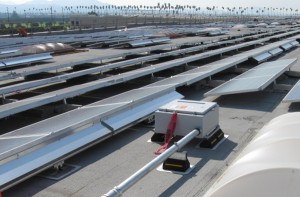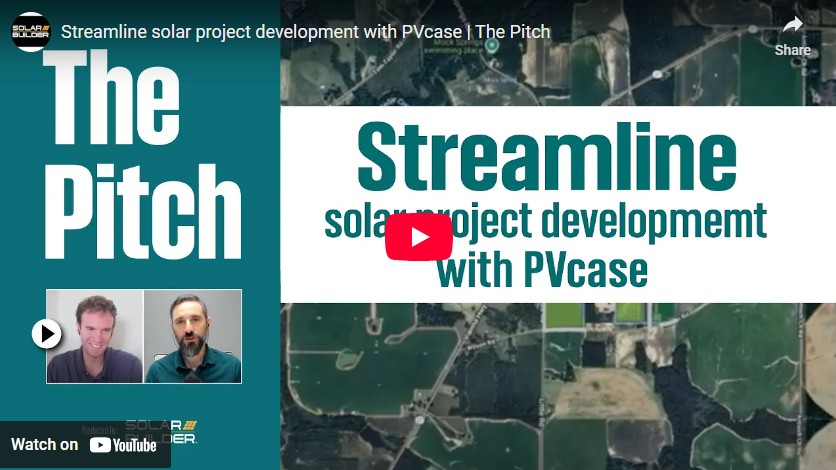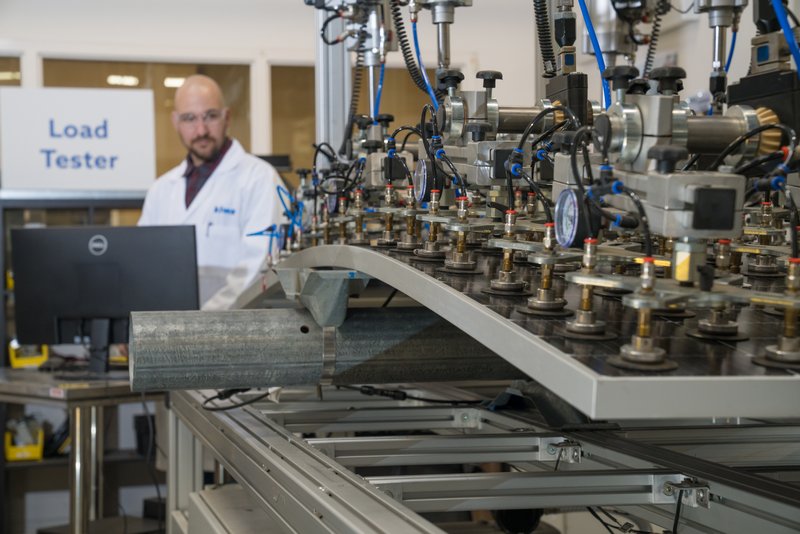Valuable Protection
Choosing the right enclosure material for wires and other solar equipment can prolong the life of the entire system.
By Jeff Seagle
The sun is Earth’s most basic life-giving force, but its destructive forces can wreak havoc on solar power systems trying to harness its output. Solar projects are cost intensive and require many years before yielding a solid return on investment. It is imperative that systems produce flawlessly from the time the installation first goes online. The proper selections of components that support the longevity and durability of the installation become critical choices in the process.
Electrical enclosures are designed to protect equipment, and the material of choice becomes the primary defense against the long weathering impact of most solar installations. Both local environments and damaging ultraviolet (UV) radiation must be taken into account. UV energy attacks materials and works to break apart their substrates. This degradation can lead to the structural breakdown in certain materials and potential failure over time. The right enclosure material can help boost the performance of a solar power system.
Types of Enclosures
There are three different enclosure types: metal, plastic or composite. Common metal enclosure choices include carbon steel, stainless steel and aluminum. Metals are usually low in cost and have a long service life, corrosion resistance and weatherability. Plastic enclosure choices include thermoplastics, such as polycarbonate, polyester and PVC.
Thermoplastics are more susceptible to UV radiation and weathering degradation over time. Composite enclosures, like those made with polyester combined with glass, have a backbone of unique fiber-reinforced plastic (FRP) that is exceptionally durable and weather-resistant.
Environmental Considerations
Corrosive environmental conditions can act as accelerants for corrosion just as gasoline does for fire. The factors that determine the level of corrosion in an environment include extreme weather conditions such as moisture, UV radiation, dust and temperature (spread between the daily high and low temperatures as it influences condensation and evaporation of moisture).
► Moisture: The level of corrosion typically increases with moisture content. Common atmospheric sources of moisture are rain, dew and condensation. Rain can have a beneficial effect in that it washes away contaminants from exposed surfaces. If rain collects in pockets or crevices however, it can be very detrimental. When relative humidity exceeds 70 percent, a thin film of moisture will form on a metal surface, providing an electrolyte. This dew or condensation can become very corrosive if it is saturated with a contaminant like sea salt or acid compounds from industrial sources.
► UV Radiation: UV has been a concern with non-metallic manufacturers for many years. The rate at which the UV degradation occurs will vary depending on heat, humidity and latitude with which the product is installed. There are also differences in the way UV breaks down differing non-metallic materials. For instance, the effects of UV light become critical more quickly with thermoplastics than with thermosets of similar chemical structure because thermosets have a heavier mass and therefore take longer for UV energy to break it down.
► Dust: Dust particles can cling to surfaces and retain moisture. Typical sources for dust include: soil/sand, smoke and soot particles or salts. Depending on the chemical composition of the dust, it may contribute to the corrosive attack or may act as a catalyst.
► Temperature: Increasing the temperature of a corrosive media will generally increase the rate of corrosion. Temperature gradients on the same piece of metal can create a basic corrosion cell. The part of metal with the higher temperature will become anodic to the area with a lower temperature.
Material Selection
If you have the opportunity to select the material, ensure you have investigated the material and that it is the most appropriate for the type of environment. Every application has its unique demands, and many capabilities are considered to be inherent in certain material choices.
Composite enclosures provide a long life and maximum reliability when it comes to all environment types. They’re a great answer to corroding stainless steel enclosures in marine environments. Composite materials are also not conductive, so they’re safer than metal enclosures.
Those building large-scale PV applications must carefully evaluate all factors to ensure an enclosure made of any material type will withstand its environment. The process for proper material and enclosure selection begins with a detailed consideration of the PV application. Each environment is unique, and all possible applications should be identified for the intended enclosure application. Contractors should start with a simple list of needs and ask plenty of questions. Failure of an enclosure can’t be an option when everyone is relying on the solar industry to help reduce the planet’s dependence on fossil fuels.
Jeff Seagle is president of Stahlin Non-Metallic Enclosures, manufacturer of fiberglass enclosure products, located in Belding, Mich. Visit www.stahlin.com for more information.





Comments are closed here.